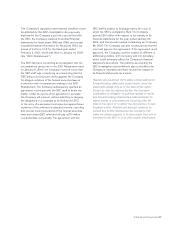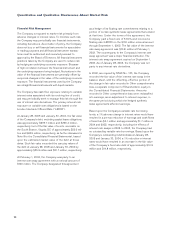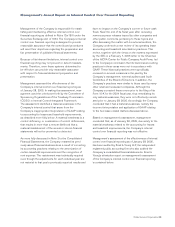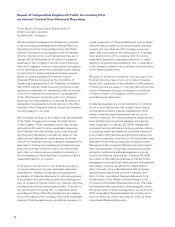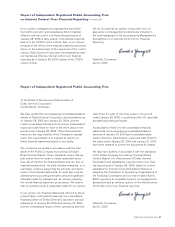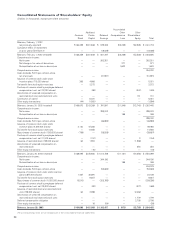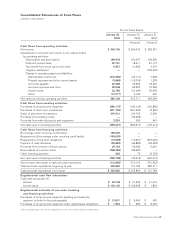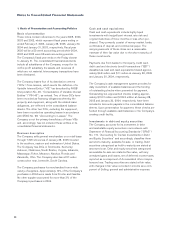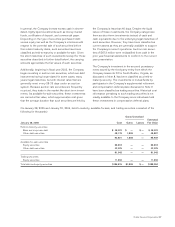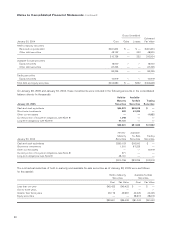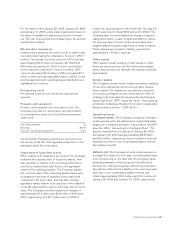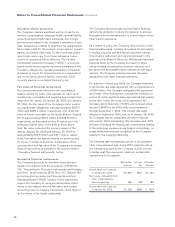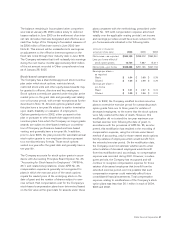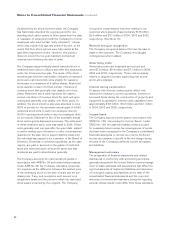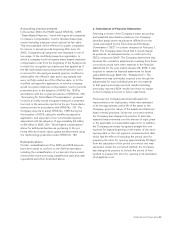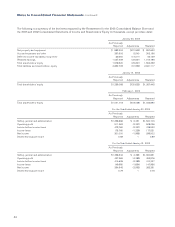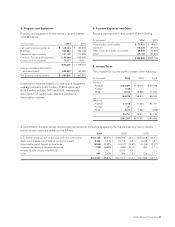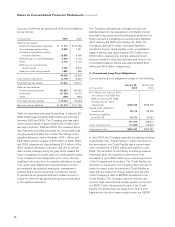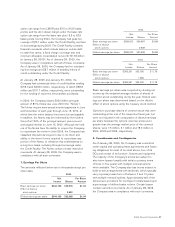Dollar General 2004 Annual Report Download - page 39
Download and view the complete annual report
Please find page 39 of the 2004 Dollar General annual report below. You can navigate through the pages in the report by either clicking on the pages listed below, or by using the keyword search tool below to find specific information within the annual report.
Dollar General Corporation 37
In general, the Company invests excess cash in shorter-
dated, highly liquid investments such as money market
funds, certificates of deposit, and commercial paper.
Depending on the type of securities purchased (debt
versus equity) as well as the Company’s intentions with
respect to the potential sale of such securities before
their stated maturity dates, such securities have been
classified as held-to-maturity or available-for-sale. Given
the short maturities of such investments (except for those
securities described in further detail below), the carrying
amounts approximate the fair values of such securities.
Additionally, beginning in fiscal year 2003, the Company
began investing in auction rate securities, which are debt
instruments having longer-dated (in some cases, many
years) legal maturities, but with interest rates that are
generally reset every 28-35 days under an auction
system. Because auction rate securities are frequently
re-priced, they trade in the market like short-term invest-
ments. As available-for-sale securities, these investments
are carried at fair value, which approximates cost given
that the average duration that such securities are held by
the Company is less than 40 days. Despite the liquid
nature of these investments, the Company categorizes
them as short-term investments instead of cash and
cash equivalents due to the underlying legal maturities of
such securities. However, they have been classified as
current assets as they are generally available to support
the Company’s current operations. Auction rate securi-
ties of $67.2 million were reclassified from cash in the
prior year financial statements to conform to the current
year presentation.
The Company’s investment in the secured promissory
notes issued by the third-party entity from which the
Company leases its DC in South Boston, Virginia, as
discussed in Note 8, has been classified as a held-to-
maturity security. The investments in mutual funds by
participants in the Company’s supplemental retirement
and compensation deferral plans discussed in Note 9
have been classified as trading securities. Historical cost
information pertaining to such trading securities is not
readily available to the Company since individuals hold
these investments in compensation deferral plans.
On January 28, 2005 and January 30, 2004, held-to-maturity, available-for-sale, and trading securities consisted of the
following (in thousands):
Gross Unrealized
January 28, 2005 Cost
Estimated
Fair ValueGains Losses
Held-to-maturity securities
Bank and corporate debt $ 45,422 $ — $ — $ 45,422
Other debt securities 48,179 1,808 — 49,987
93,601 1,808 — 95,409
Available-for-sale securities
Equity securities 38,618 — — 38,618
Other debt securities 42,425 — — 42,425
81,043 — — 81,043
Trading securities
Equity securities 11,932 — — 11,932
Total debt and equity securities $186,576 $1,808 $ — $188,384


